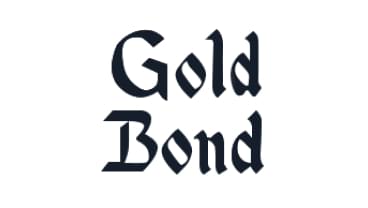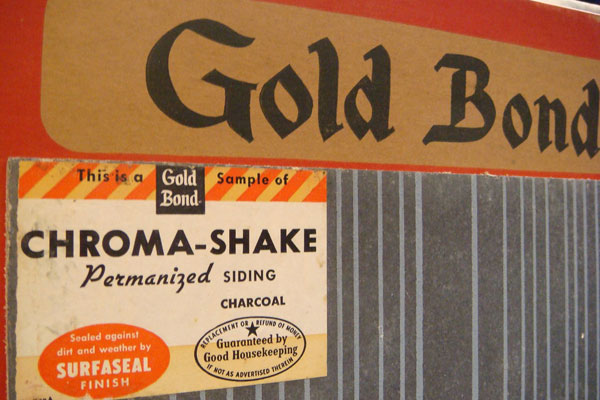Gold Bond
Gold Bond is a brand of construction products that once contained asbestos. Asbestos litigation forced Gold Bond and its parent company, National Gypsum, to file for bankruptcy in 1990. A trust fund was established with $347 million to handle asbestos claims.

-
Amount in Trust: $347 million
-
Year Trust was Created: 2003
Written by Daniel King • Edited By Walter Pacheco • Scientifically Reviewed By Sean Fitzgerald, PG
Asbestos.com is the nation’s most trusted mesothelioma resource
The Mesothelioma Center at Asbestos.com has provided patients and their loved ones the most updated and reliable information on mesothelioma and asbestos exposure since 2006.
Our team of Patient Advocates includes a medical doctor, a registered nurse, health services administrators, veterans, VA-accredited Claims Agents, an oncology patient navigator and hospice care expert. Their combined expertise means we help any mesothelioma patient or loved one through every step of their cancer journey.
More than 30 contributors, including mesothelioma doctors, survivors, health care professionals and other experts, have peer-reviewed our website and written unique research-driven articles to ensure you get the highest-quality medical and health information.
About The Mesothelioma Center at Asbestos.com
- Assisting mesothelioma patients and their loved ones since 2006.
- Helps more than 50% of mesothelioma patients diagnosed annually in the U.S.
- A+ rating from the Better Business Bureau.
- 5-star reviewed mesothelioma and support organization.
Testimonials
My family has only the highest compliment for the assistance and support that we received from The Mesothelioma Center. This is a staff of compassionate and knowledgeable individuals who respect what your family is experiencing and who go the extra mile to make an unfortunate diagnosis less stressful. Information and assistance were provided by The Mesothelioma Center at no cost to our family.LashawnMesothelioma patient’s daughter
How to Cite Asbestos.com’s Article
APA
King, D. (2024, March 25). Gold Bond. Asbestos.com. Retrieved April 18, 2024, from https://www.asbestos.com/companies/gold-bond/
MLA
King, Daniel. "Gold Bond." Asbestos.com, 25 Mar 2024, https://www.asbestos.com/companies/gold-bond/.
Chicago
King, Daniel. "Gold Bond." Asbestos.com. Last modified March 25, 2024. https://www.asbestos.com/companies/gold-bond/.
Gold Bond’s History with Asbestos
In 1925, the National Gypsum Company developed a light, flexible wallboard that was superior to other wallboards.
National Gypsum’s wallboard materials became commonly known as Gold Bond products thanks to a promotional “gold bond” certificate that guaranteed its superiority. Eventually, the Gold Bond line of products expanded beyond wallboard and many of these products contained asbestos.
Asbestos is a natural mineral that was used in Gold Bond products as a strengthener and fireproofing agent. A large number of asbestos-containing products were marketed under the Gold Bond label between the 1940s and early 1980s.
After the early 1980s, these products were asbestos-free, but the building booms of the 1950s and 1960s meant that Gold Bond products were installed in millions of locations.
Thousands of asbestos lawsuits have been filed by people who manufactured or worked with Gold Bond products and later developed asbestos-related diseases such as mesothelioma or lung cancer.
Development of Gold Bond Trust
In 1985, National Gypsum and Gold Bond Building Products were involved in an industrywide settlement, commonly known as the Wellington Agreement, between asbestos manufacturers and their insurance providers.
The agreement resolved dozens of lawsuits between the asbestos manufacturers and their insurers by establishing the National Claims Facility, which handled claims for only three years before it was dissolved.
In 1990, the weight of asbestos claims caused National Gypsum and its Gold Bond Building Products division to file for Chapter 11 bankruptcy.
It emerged from bankruptcy in 1993, and the following entities were developed through the reorganization plan:
- “New National Gypsum” was formed as a new company (although it continues to be known simply as National Gypsum Company) and it purchased the Gold Bond Building Products division.
- “Old National Gypsum” and its asbestos liabilities became the Asbestos Claims Management Corporation.
- The National Gypsum Corporation Settlement Trust was created to handle all asbestos-related personal injury claims and property damage claims. It was handled by the Center for Claims Resolution.
In 1997, it became clear that the trust did not have enough funds to handle future claims. On Aug. 19, 2002, the Asbestos Claims Management Corporation (Old National Gypsum) filed for bankruptcy. It emerged on Aug. 6, 2003, and the reorganization plan established a new trust called the National Gypsum Company Bodily Injury Trust.
The new trust was initially funded with $347 million to handle future asbestos claims. The current payment percentage is 41%, which is significantly higher than the majority of other asbestos trusts.
As of January 2022, the trust has paid more than $514 million to 215,930 claimants.
Asbestos Litigation Involving Gold Bond
Asbestos claims began to pile up against Gold Bond Building Products and National Gypsum in the 1970s. Many of these lawsuits were filed by workers who had contracted mesothelioma cancer as a result of working with Gold Bond products.
One lawsuit involving Gold Bond products led to an important decision for asbestos plaintiffs:
- In Roehling v. National Gypsum Company Gold Bond Building Products, the court essentially held that circumstantial evidence of a manufacturer’s product at a site, such as a witness remembering the Gold Bond label, was enough for the manufacturer to be named as a defendant in subsequent litigation.

Gold Bond Asbestos Products and Workers at Risk

The asbestos-containing products sold under the Gold Bond name included:
- Raw Asbestos Fiber
- E-Z Soak
- E-Z Spray Texture
- E-Z Tex
- Exterior Stucco
- Gypsolite Plaster
- Fibered Plaster
- Unfibered Plaster
- Finisher
- Asbestos 7M-2 Thermal Insulating Cement
- Laminating Adhesive
- Mortar/Special Asbestos Cement Mix
- No. 340-N Insulating Cement
- Rockwool No. 340 Insulating Cement
- All-Purpose Joint Compound
- Bloc-Fil
- Cover Crete
- Vraftex
- Decorite
- Abestone
- Asbestos-Cement Siding
- Dutch Lap Shingle
- Hexagonai Shingle
- Ranch Style Shingle
- Asbestos Cement Board
- Asbestos-Faced Mineral Board
- Non-Perforated Asbestos Panels
- Asbestos Permaboard
- Plasticrylic Panels
- Humiguard Asbestos Panels
- Sprayolite
- Shadowall
- Quik-Treat Joint Compound
- Ready Mixed Joint Compound
- Tri-Treatment Joint Compound
- Velvet Joint Compound
- Velvet Spray Quick Texture
- Velvet Topping Compound
- Velvet White Super Spray
- Spray-On Acoustical Plaster
- Super Westex
- Texas Texture
- Topping Compound
- Natcor
- Natcor Sheathing
- Texture Paint
- Vinyl Texture
- Wall Spray
- Fire-Shield Plaster
- Patching Plaster
- Woodrock
These products contained between 22% and 45% asbestos on average, though some contained as little as 1%. Gold Bond sold raw asbestos fiber, which contained 100% chrysotile asbestos.
Certain products, such as drywall and joint compounds, were friable, meaning the asbestos crumbled easily into a fine powder. These products put workers at risk of significant asbestos exposure.
Employees who helped manufacture Gold Bond products were at the highest risk of exposure to dangerous levels of asbestos.
Additionally, many occupations were at risk of working with Gold Bond’s products.
Occupations at Risk of Asbestos Exposure:
- Construction workers
- Carpenters
- Insulators
- Painters
- Building maintenance workers
- Home repairmen
- Demolition workers
- Pipefitters
- Drywall workers
When drywall workers mixed powdered compounds, or sanded the compound, asbestos fibers were released into the air and inhaled into the lungs of those nearby.
Workers involved in the remodeling and demolition of buildings containing Gold Bond asbestos products are at risk of exposure today.
Gold Bond History
Gold Bond Building Products became its own division of the National Gypsum Company in the 1960s. This maneuver was orchestrated when a new chairman and chief executive officer, Colon Brown, took over the company in 1965.
In 1978, Gold Bond Building Products moved from Buffalo, New York, to Charlotte, North Carolina.
Through a bankruptcy reorganization plan carried out in 1990s, Gold Bond Building Products became part of National Gypsum Company once again.
Today, National Gypsum remains one of the world’s leading producers of gypsum wallboard and continues to market a line of wallboard and related products under the Gold Bond label.







